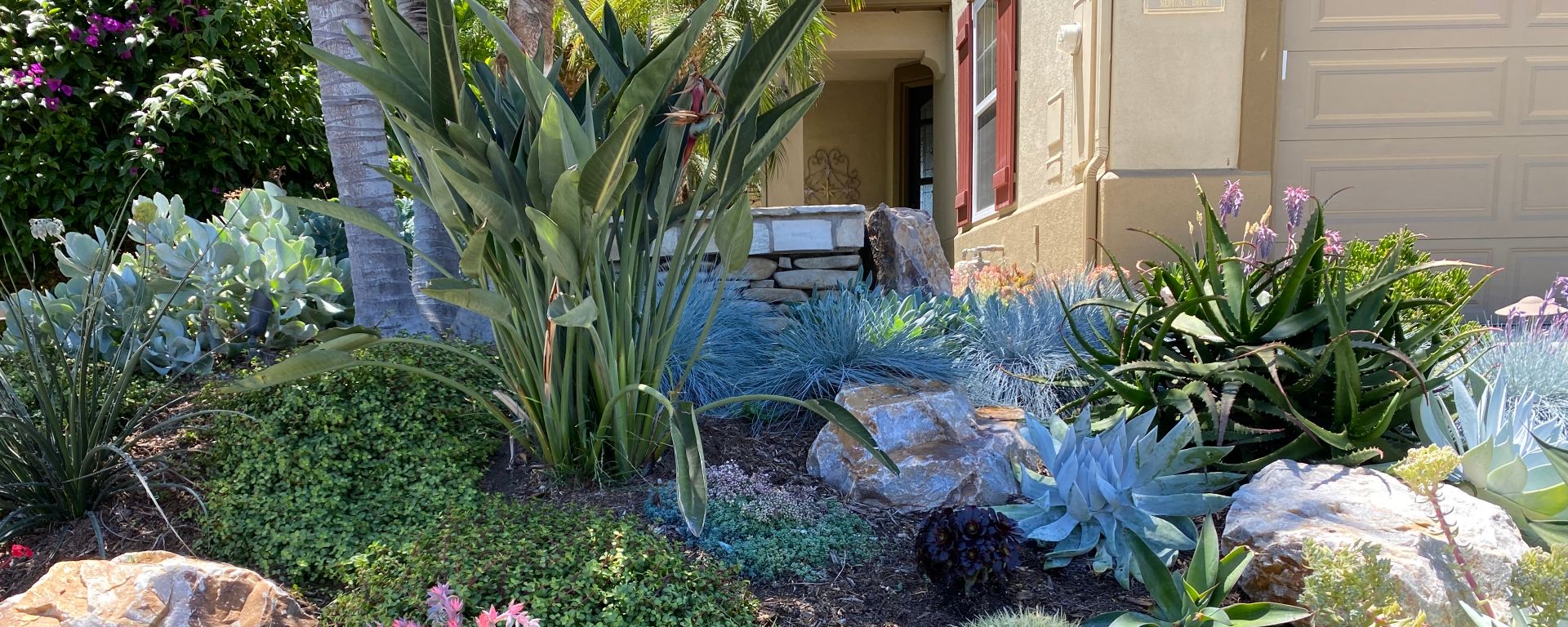If you’ve read the title of this post and realised you’ve come across a foreign word, you aren’t alone. Many people don’t know the ins and outs of xeriscaping, but in a world where water scarcity and environmental concerns are growing, it has emerged as a sustainable and water-saving gardening and outdoor maintenance practice. So, what exactly is it? A gardening technique that involves designing and maintaining landscapes that require minimal water usage while still providing a beautiful and vibrant outdoor space.
If you’re ready to learn more about it, including its benefits and suitable plants, we’re ready to plant a seed of thought in your mind. In this blog post, we will explore everything that is xeriscaping and provide you with a comprehensive guide to implementing water-saving techniques in your garden.
Why Choose to Xeriscape – Environmental Benefits
If you’re concerned about water usage and reducing your environmental footprint, xeriscaping is a practice you should consider. Let’s find out why by looking at the positive impact it has.
1. Reduced Water Usage
One of the primary benefits of xeriscaping is its ability to significantly reduce water usage in outdoor spaces. By utilising drought-tolerant plants, efficient irrigation methods, and soil management techniques, xeriscaping can help conserve water, especially in arid or water-stressed regions.
2. Minimised Water Runoff
Traditional gardening practices often lead to water runoff, which can carry pollutants, fertilisers, and chemicals into water bodies, causing ecological imbalances. Xeriscaping focuses on optimising water absorption by using mulch, strategic plant placement, and proper soil preparation, reducing water runoff and its associated environmental impacts.
3. Preservation of Natural Resources
Xeriscaping plays a crucial role in conserving natural resources, such as freshwater reserves. By minimising the need for excessive irrigation, this approach reduces the strain on local water sources, helping to preserve these valuable resources for possible times of drought and future generations.
4. Preservation of Ecosystems
Xeriscaping promotes the use of native and adaptive plant species that are well-suited to the local climate and soil conditions. By incorporating these plants into your garden, you can help preserve and support the native ecosystem, providing habitat and food sources for local wildlife.
Aesthetic Appeal and Design
Besides the environmental benefits, there is a lot to be gained from an aesthetic regard for your home. Let’s take a look at these below.
1. Diverse and Colourful Landscape
Contrary to popular belief, xeriscaping does not mean sacrificing beauty in your garden. You can create a diverse and visually appealing landscape with careful planning and a selection of drought-tolerant plants. Many native plants offer vibrant colours, interesting textures, and unique shapes, adding depth and character to your outdoor space. Keep reading to find a list of appealing plants that can be incorporated when using this gardening practice.
2. Low Maintenance and Cost-Effective
Xeriscaping reduces the need for excessive watering, mowing, and fertilising, resulting in a low-maintenance garden. This not only saves you time and effort but also reduces the costs associated with watering and maintaining a traditional garden. Xeriscaping can be an excellent long-term investment that pays off both in terms of aesthetics and resource conservation.
Implementing Xeriscaping Techniques
If you’re interested in giving your garden a new lease on life and taking enjoyment in the benefits mentioned above, here are the techniques you can use when beginning your xeriscaping journey.
1. Soil Improvement and Mulching
Preparing the soil by adding organic matter and improving its structure enhances its ability to retain moisture. Applying mulch around plants helps conserve water by reducing evaporation and suppressing weed growth.
2. Selecting Drought-Tolerant Plants
Choosing plants that are adapted to your local climate and soil conditions is essential for successful xeriscaping. Drought-tolerant plants, such as succulents, native grasses, and Mediterranean herbs, can thrive with minimal water requirements.
3. Efficient Irrigation Methods
Utilise smart irrigation techniques, such as drip irrigation or soaker hoses, to deliver water directly to the plant’s root zone. Doing this minimises water loss through evaporation and ensures that water is used efficiently.
4. Proper Maintenance and Monitoring
Regularly inspect and maintain your xeriscape garden by removing weeds, pruning plants, and monitoring their health. Adjust irrigation schedules based on weather conditions and plant needs to optimise water usage.
Well-Suited Plants for Xeriscaping
If you’re a little lost on what plants will look best in your garden and still be xeriscaping-friendly, here is a list for you to choose from:
- Agave: These succulent, low-maintenance plants have striking rosette shapes and come in a variety of sizes and colours.
- Lavender: Known for its aromatic fragrance and beautiful purple flowers, lavender is a drought-resistant plant that thrives in sunny and well-drained conditions.
- Yucca: With its tall, spiky leaves and unique flower spikes, yucca plants make a bold statement in xeriscapes. They are hardy and require minimal water.
- Penstemon: Also known as beardtongue, penstemon features tubular flowers in vibrant colours like red, pink, purple, and blue. They are attractive to pollinators and can tolerate dry conditions.
- Red Hot Poker (Kniphofia): These plants produce tall spikes of vibrant, torch-like flowers in shades of red, orange, and yellow. They are drought-tolerant and add a pop of colour to xeriscapes.
- Russian Sage (Perovskia atriplicifolia): This perennial plant has silvery-grey foliage and produces tall spires of lavender-blue flowers. It thrives in dry, well-drained soils.
- Salvia: Salvia varieties, such as ‘May Night’ or ‘Hot Lips,’ offer beautiful blooms in shades of purple, red, pink, or white. They attract pollinators and can tolerate drought conditions.
- Mexican Feather Grass (Nassella or Stipa tenuissima): This ornamental grass features delicate, feathery plumes that sway gracefully in the breeze. It requires little water and adds texture to xeriscapes.
- Sedum: These succulent plants come in a range of shapes and sizes, from creeping groundcovers to upright varieties. They have fleshy leaves and offer flowers in various colours.
- Kangaroo Paw (Anigozanthos): Native to Australia, kangaroo paw plants have unique, fuzzy flowers that resemble the paw of a kangaroo. They come in vibrant colours like red, orange, and yellow and thrive in dry conditions.
Conclusion
When implementing the techniques of xeriscaping, you can create a beautiful and thriving landscape while minimising water usage. Now that you have the added gardening knowledge, you can contribute to water conservation, reduce environmental impacts, and enjoy the aesthetic appeal of a well-designed garden.
No matter what type of garden you have, or home for that matter, SweepStars are always ready to provide unmatched indoor and outdoor services that will boost your curb appeal, give you a healthier quality of life, and allow you to kick your feet up and relax. Book a SweepSouth cleaning service for any and all occasions, and get ready to enjoy a happy, healthy home.








